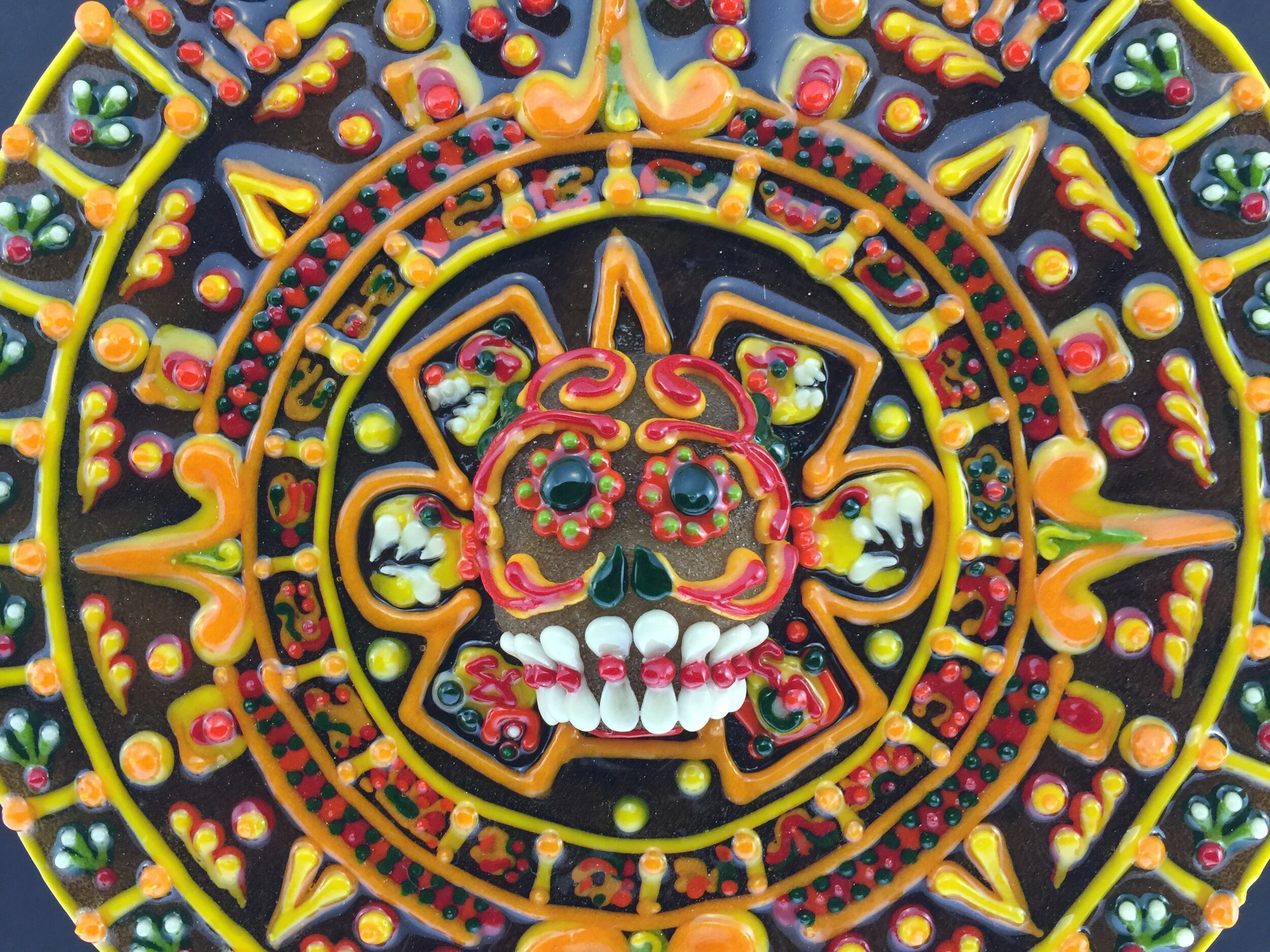
The History
Traditions of Dia de los Muertos: A Way to Remember
By Christina Preston
Día de los Muertos, a traditional holiday of Mexico, occurs November 1st & 2nd of every year. This holiday occurs during the same time as the Catholic holiday of All Saints and All Souls day. However, the Mexican holiday of the Day of the Dead has very little in common with the European holiday beyond the remembrance of the deceased. The Catholic holiday is spent praying for the souls of the dead to be saved from purgatory while the Mexican holiday is spent praying to the souls of the departed (Lechuga 1991: 71). During the celebration of Día de los Muertos, the living take the time to honor the dead by building altars and providing offerings to lure the souls of their loved ones home for an earthly reunion.
Upon the eve of November 1st the souls of children are honored. Los ángelitos receive special offerings of toys, candies as well as other decadent sweets. Miniature representations of objects such as metates, tortilla presses and tools may also be crafted for the souls of the children to play with (Zugaide 1980:76). The following day and night of November 2nd is dedicated to adults. During the day the cemeteries are cleaned, tombs are repaired, scrubbed, painted and weeds are pulled. Around midday the bells of the church will begin to ring until the following morning to guide the souls home to their expectant families. In the evening the souls will be accompanied from their altars within the homes of their loved ones to the cemeteries where they will eventually begin their long journey back to the afterlife. Flower wreaths made of marigolds as well as petals are used to adorn the graves and candles are lit to guide the way. Offerings of pan de muerto, liquor, and other foods will often be brought to the cemeteries where families will hold overnight vigils alongside the graves. Throughout the night, music may be used to serenade the dead and family members will exchange stories and food until the souls of the dead are ready to depart once again.
Altars are also traditionally built within the home. The design of each altar varies from each person and also by region. However, there are many key components that can typically be found. “Elements that all arrangements have in common include the use of candles, flowers (for the most part yellow flowers like cempazuchiles), fruits, breads, and dishes that are not ordinarily cooked like tamales, or tortillas made with special blue or red corn, sweets and drinks like chocolate and pulque (Pomar 1995: 22).” The creation of an altar can become quite an elaborate affair with many families preparing weeks in advance and sparing little expense. It is common for new dishes to be purchased to accompany food offerings left upon the altars. “The combinations of the different aromas of these dishes, and of the waxes, the copal and fruits and flowers, suffuse the room-generally the biggest in the house-where the offerings are placed create this peculiar and pleasant smell, as apart of the ritual, is meant to satisfy the dead who are not able to eat: by their sense of smell they will be able to appreciate the richness of the family offerings (Pomar 1995: 23).” Extra candles and food may also be placed upon the altar for forgotten souls. Despite the difference between the Mexican and European holiday, objects of religious affinity such as crosses, rosaries, and figurines are also a common staple of each altar. The design and focus of each altar is heavily influenced by the creator along with the individual being honored. Each altar is a blend of indigenous and modern culture.